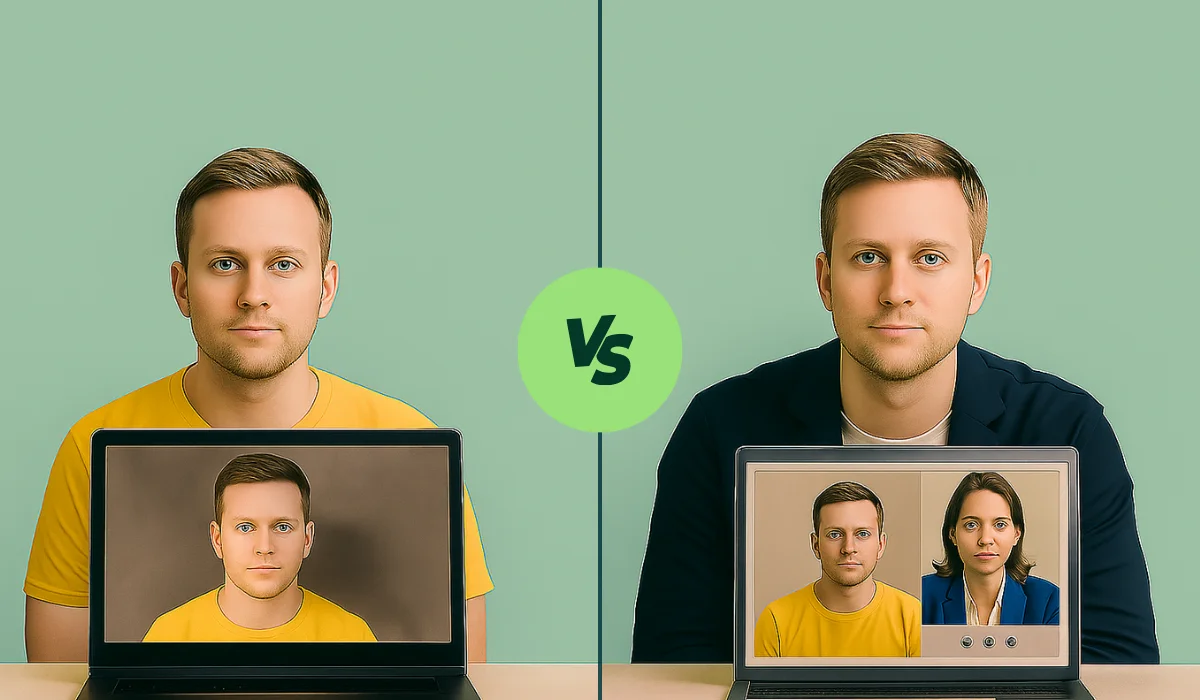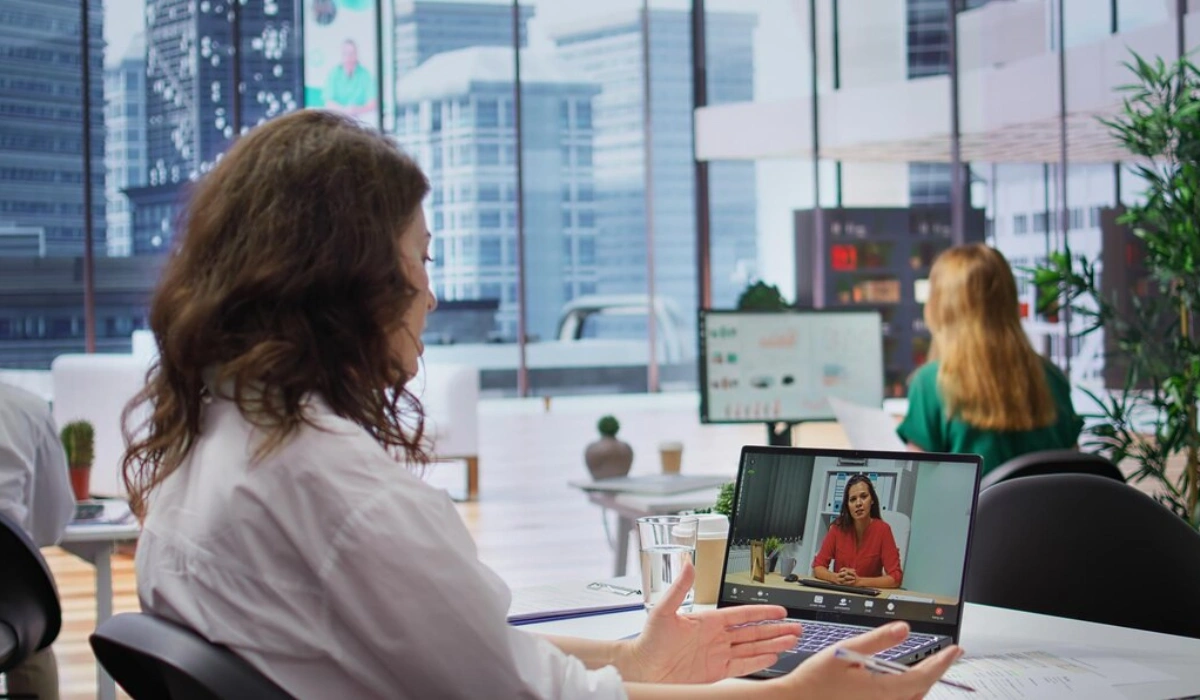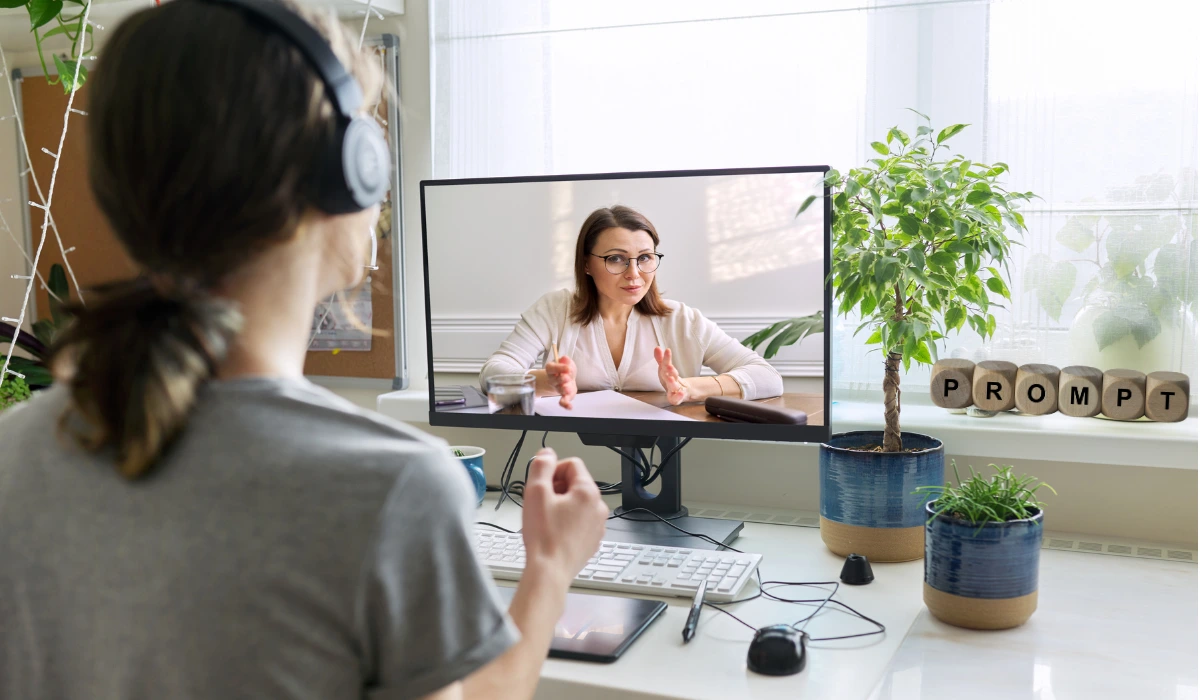
One-Way vs Live Video Interviews: Which is Right for You?
Oct 10, 2025 |
Video interviewing has completely changed how companies hire. If you're navigating the world of recruitment technology, you've probably wondered about one-way vs live video interviews and which format works best for your needs. The truth is, both have their place in modern hiring, but understanding when to use each can make or break your recruitment success.
Let's dive into the key differences between these two formats and help you figure out which approach or combination will work best for your organisation.
What Are One-Way Video Interviews?
One-way video interviews (also called pre-recorded video interviews or asynchronous video interviews) let candidates record their responses to your questions on their own time. Think of it as giving candidates a set of questions they can answer via webcam whenever it suits them.
Here's how it works: You create a list of interview questions in your one-way video interview platform, and candidates receive an email invitation. They log in, see each question, get some prep time, and record their answer. Once they're done, you and your team can watch the recordings whenever you want.
This format is brilliant for screening large numbers of applicants for graduate programmes, seasonal hiring, or popular entry-level positions. It's also perfect when you're recruiting globally and dealing with tricky time zones.
Why Choose One-Way Interviews?
The benefits of one-way interviews are pretty straightforward. You save massive amounts of time because you can watch multiple candidate videos back-to-back, even at double speed. No more scheduling nightmares trying to coordinate calendars across different time zones. Plus, every candidate answers the exact same questions, which makes comparing them much fairer.
According to Vouch, Virtual interviews, including video interviews and one-way interviews, are used in 86% of hiring processes globally.

What Are Live Video Interviews?
Live video interviews are exactly what they sound like: real-time conversations over video. You and the candidate both log into a video call at the same time, just like a traditional interview, but without the commute.
These interviews work best for shortlisted candidates who've already passed initial screening. They're ideal when you need to assess soft skills, cultural fit, or when the role requires strong communication abilities. Think sales positions, management roles, or any job where personality and interpersonal skills really matter.
Why Choose Live Interviews?
The biggest advantage is a genuine human connection. You can ask follow-up questions, clear up confusion on the spot, and get a real feel for someone's personality. Candidates can ask questions too, making it a proper two-way conversation. This format is unbeatable for assessing how someone thinks on their feet and whether they'll gel with your team.
One-Way vs. Live Video Interviews: The Key Differences
Let's break down how these formats compare across what really matters.
1. Time & Efficiency
One-way interviews win hands down for volume. You can review a 10-minute recording in about 6 minutes and assess dozens of candidates in an hour. Live interviews need dedicated 30-60 minute slots for each candidate, but you get deeper insights faster through real-time conversation.
Best for speed: One-way video interviews
Best for depth: Live video interviews
2. Candidate Experience
One-way interviews offer flexibility; candidates can complete them at 11 PM in their pajamas if they want.
Live interviews feel more personal and natural. Candidates get immediate responses and can gauge how things are going. However, scheduling can be tricky, especially for people with demanding jobs or those in different time zones.
Best for convenience: One-way video interviews
Best for engagement: Live video interviews
3. What You Can Actually Assess
Pre-recorded video interviews excel at evaluating preparation, subject knowledge, and communication clarity. You see how well candidates organise their thoughts without prompts.
Live interviews shine for assessing adaptability, active listening, problem-solving under pressure, and cultural fit. The back-and-forth reveals personality and genuine interest in ways recordings simply can't.
Best for consistent assessment: One-way video interviews
Best for soft skills: Live video interviews
4. Fairness and Bias
One-way interviews ensure everyone answers identical questions, which helps with consistency. However, unconscious bias about appearance or accent still exists when watching recordings.
Live interviews can introduce bias through rapport or the interviewer's mood, but structured scoring rubrics help. Both formats benefit from diverse interview panels and clear evaluation criteria.
5. Cost Considerations
Video recruiting tools for one-way interviews need subscription fees, but you save enormously on staff time. Live interviews use simpler technology (often platforms you already have) but require more person-hours.
More cost-effective at scale: One-way video interviews
Lower tech investment: Live video interviews
When to Use One-Way Video Interviews?
One-way interviews are game-changers when you're dealing with high volumes or need consistent, efficient screening. They're perfect for the early stages of recruitment where time and fairness matter most.
Use asynchronous video interviews when you're dealing with:
- Large applicant volumes: When you receive 100+ applications, one-way interviews help you quickly identify qualified candidates without spending weeks on initial screening calls.
- Initial screening stages: Perfect for filtering candidates before investing time in personal conversations, ensuring only suitable candidates progress to live interviews.
- Global recruitment: When time zones make scheduling impossible, asynchronous interviews let candidates respond at their convenience regardless of location.
- Standardised assessments: Roles requiring consistent evaluation criteria like graduate programmes or regulated industries benefit from everyone answering identical questions.
- Time-sensitive hiring: When you need to move fast, one-way interviews accelerate early-stage screening and reduce overall time-to-hire significantly.
Getting It Right
Keep questions clear and focused, around 5-7 questions totalling 15-20 minutes. Provide crystal-clear instructions so candidates know exactly what to expect. Review responses quickly to keep candidates engaged, and always communicate your timeline and next steps.
When to Use Live Video Interviews?
Live interviews work best when you've already narrowed down your candidate pool and need a deeper, more personal assessment. They're your go-to for roles where human interaction and soft skills are crucial to success.
Choose live video interviews for:
- Shortlisted candidates after initial screening: Once you've filtered through applications with one-way interviews, live sessions help you dive deeper with your top picks and assess nuanced qualities.
- Roles requiring strong soft skills: Client-facing positions, sales roles, and customer service jobs need real-time communication assessment to gauge rapport-building and emotional intelligence.
- Cultural fit assessment: Live conversations reveal whether someone's values and working style genuinely align with your organisation through authentic, two-way dialogue.
- Senior positions needing nuanced evaluation: Leadership and specialist roles require discussing strategic thinking and complex decision-making processes that benefit from real-time exploration.
- Final-stage interviews before making offers: Make confident final decisions whilst also selling the opportunity and ensuring candidates are excited about joining your team.
Making Them Count
Use structured questions but allow flexibility for follow-ups. Do tech checks beforehand to avoid awkward delays. Involve multiple interviewers when appropriate, and always leave time for candidate questions; they're interviewing you, too. Complete your scoring immediately whilst everything's fresh.
The Best of Both Worlds: Hybrid Interviews
Smart companies don't choose between formats; they use both strategically. Here's a typical workflow:
Stage 1: Everyone who meets basic requirements completes a one-way video interview (narrows 200 applicants to 30 strong candidates).
Stage 2: Those 30 get live video interviews for deeper assessment (identifies 8-10 finalists).
Stage 3: Finalists meet the team (in-person or video) before offers go out.
This approach is efficient and thorough. You screen quickly but give promising candidates the personal attention they deserve. One tech company using this method cut their time-to-hire by 40% whilst improving candidate experience scores.
Conclusion
The differences between one-way and live video interviews are clear, but they work best together rather than as alternatives. One-way interviews excel at efficient screening and standardised assessment, whilst live interviews provide the human connection needed for final decisions. For most organisations, starting with asynchronous screening through platforms like ScreeningHive, which streamlines the initial evaluation process, and then moving promising candidates to live conversations, delivers the best results. This hybrid approach means you're not sacrificing speed for quality.
Think about your recruitment challenges: Are you overwhelmed by application volumes? Do you need faster time-to-hire? A one-way video interview platform can transform your early-stage screening, freeing up your team to focus on meaningful conversations with top candidates. Whether you choose one-way, live, or a combination, the goal remains the same: finding great people whilst creating a positive experience for everyone. The right approach is the one that helps you hire better, faster, and more fairly.
Frequently Asked Questions (FAQs)
1. What is the difference between one-way and live video interviews?
One-way interviews let candidates record responses to pre-set questions on their own time, whilst live interviews are real-time conversations between recruiters and candidates via video call.
2. Are one-way video interviews fair?
Yes, they can be fairer than traditional interviews because every candidate answers identical questions under similar conditions, reducing interviewer bias and ensuring consistent evaluation.
3. How long should a one-way video interview be?
Most effective one-way interviews are 10-20 minutes total, typically consisting of 5-7 questions that respect the candidate's time whilst gathering sufficient information for screening decisions.
4. Can you use both one-way and live video interviews in hiring?
Many companies use a hybrid approach, starting with one-way interviews for initial screening and then conducting live interviews with shortlisted candidates for deeper assessment.
5. What are the advantages of pre-recorded video interviews?
They save significant time, eliminate scheduling conflicts, allow for faster candidate screening, and provide flexibility for both recruiters and candidates across different time zones.







